Enter Your Email To Receive It Now!
You will only receive my emails and you can unsubscribe at any time.
Cats are amazing pets. Due to their intelligence that allows them to sense the mood, they are the best companions whether for you or your kids. However, when you have a cat allergy, then the story is all different.
Keeping a cat in your house may turn out to be a nightmare because of the resultant allergic reaction. However, this does not mean that you can’t own a cat. You can get a hypoallergenic kitten or cat and enjoy the privilege of owning a cat without the burden of allergies. Here's all you need to know about hypoallergenic cats and kittens.
In addition I offer you my E-Book '' Help Your Cat Live Longer '' which costs 10$ on amazon for free.
As its name suggests this book will help you avoid the mistakes that many cat owners make, decrease the longevity of the cat.


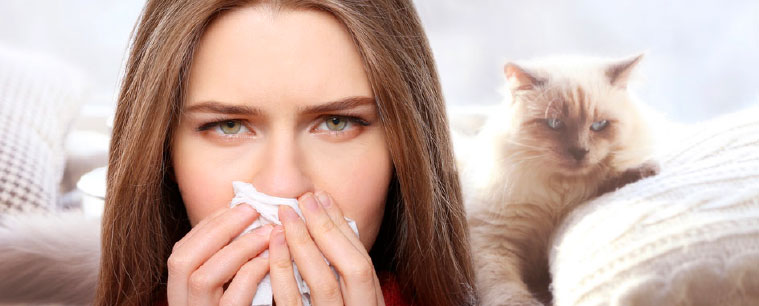
You may have read that no cat is non-allergenic. Yes, that’s true. However, there are breeds of cats that are less allergenic or what is called hypoallergenic. They do produce allergens but at levels that are way lower than the rest of the cats. Most people with allergies will therefore not have allergic reactions towards these cats.
Extensive research into the different breeds of cats and their potential to cause allergies has been done and the results have been a relief to many people who could never keep a cat. There are currently more than 13 breeds that you can choose from and are discussed extensively here.

But before looking at the breeds, it is good to understand what exactly causes the allergy and the common signs and symptoms. The next step will be to look at the types of these hypoallergenic cats. Now that cats are great family pets, information about kids and hypoallergenic cats has not been left out. And of course, you will get some great tips about the hypoallergenic cats and kittens after the list of cats from which you can choose.


As opposed to what many people believe, it is not the hairthat people are allergic to but rather proteins. The causative agent to most cat allergies is the Fel d 1 protein that is present in the cat’s saliva. Studies have also shown that Fel d4 proteins also play a role. But how exactly do they cause an allergy? Why then is the hair blamed?
Cats like grooming themselves using their saliva which as you now know contains Fel d1 proteins. The allergens stick to the hairs which are then dropped all over your house as the cat sheds its hair. For this reason, most of the people tend to think they are allergic to cat hair. It is actually the Fel d1 protein from the saliva that is stuck on the hairs that cause the allergy.
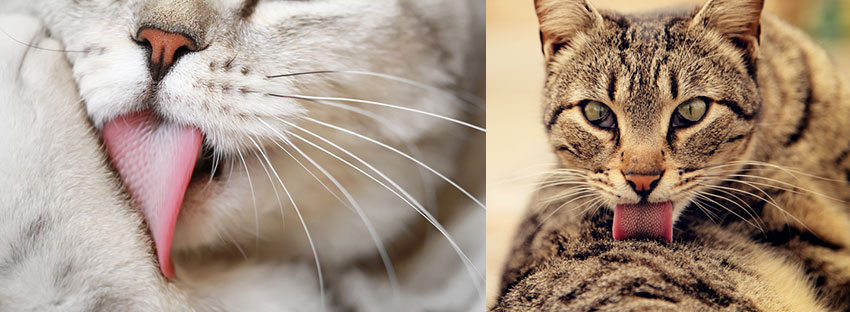
The other important allergen is Fel d4 protein. Unlike its counterpart that is in the cat's saliva, it is released from the cat’s sebaceous glands. The sebaceous glands are at the root of the cat’s hair. They, therefore, stick to the hairs and when the hair is shed, exposure to the hair will cause an allergic reaction.
It is not only the hair that carries these allergenic proteins but also the urine and dander. Simply put, if you have a cat allergy and get exposure to the saliva, urine, dander or hair from the cat, you may get an allergic reaction.
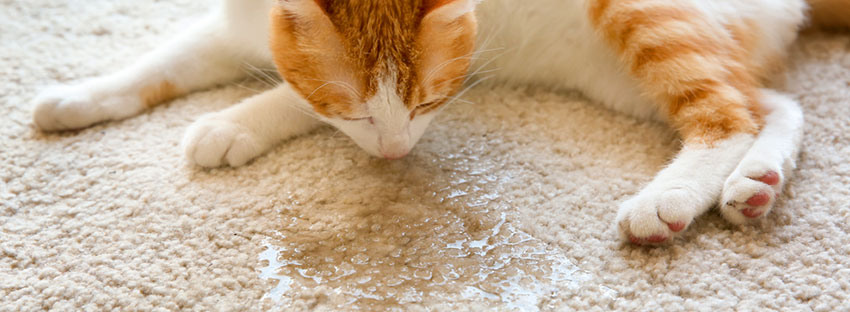
To ordinary people, exposure to the allergens is harmless. However, people with allergies have an oversensitive immune system that mistakes the harmless substances for harmful invaders. It then mounts an attack whose side effects are the symptoms you may experience.
Currently, about 10% of the population has pet allergies especially cat allergies. For these group of people, exposure to the proteins in a house with cats will trigger an allergic reaction which may range from mild to severe depending on the severity of their allergy.
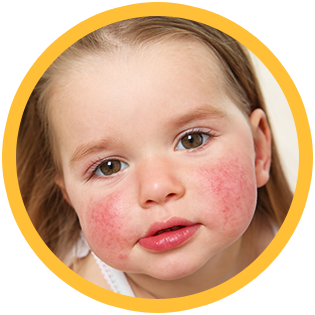
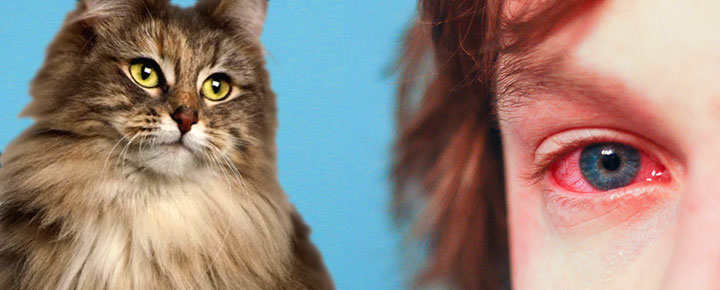
In case you are not sure if you have a cat allergy, below are the signs and symptoms that you may notice upon exposure to cats or an environment with cats:
• Coughing and wheezing
• Sneezing
• Runny, stuffy or itchy nose
• Skin redness
• Red, itchy eyes
• Hives or rashes on the skin especially your face or chest
• Sometimes anaphylactic shock
• Flare up of conditions like asthma
These symptoms may often develop rapidly, worsening within minutes or may take hours. Be sure to seek out medical attention immediately if you experience them. First aid may come in handy especially when you cannot make it to the health facility in time.
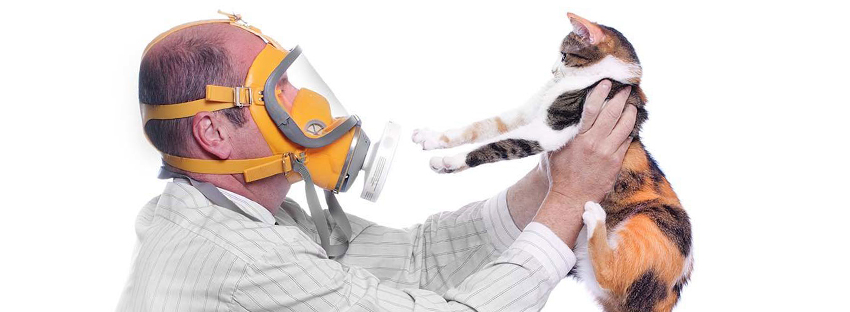
You may have noticed them and sought advice from a friend or a doctor. In most cases, you may be told to get antihistamines to help you with the cat allergy. However, the simpler solution is to get yourself a hypoallergenic cat. You never have to worry about taking medications or having strict boundaries for your pet. It gives you the freedom to enjoy your cat just like any other person would.
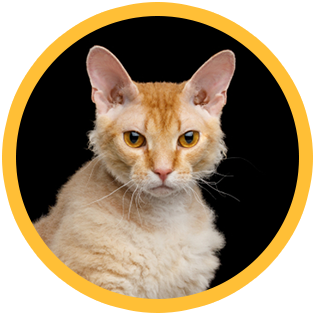

Currently, there are two types of hypoallergenic cats. This classification does base on the mechanism of allergen reduction.
It is now known that some breeds do have less Fel d1 protein secretion in their saliva. These breeds are therefore suitable for people struggling with cat allergies as they are less likely to trigger an allergy.
Although these cats may have a lot of hair covering their bodies, they surprisingly cause little or no allergic reactions in people with cat allergies. Some of these breeds include the Siberian and the Balinese which will be discussed a little later.
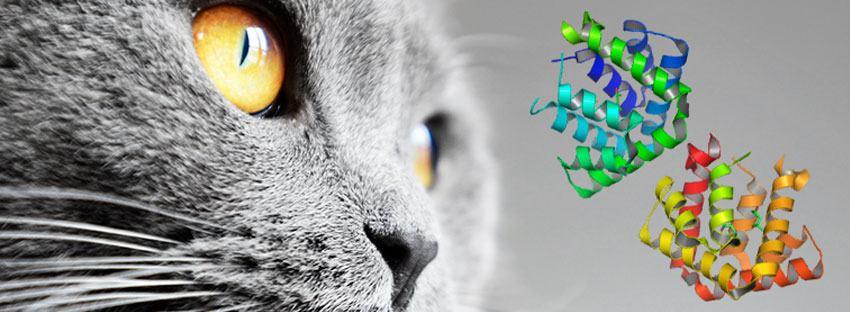
The other favorite type of hypoallergenic cats includes cats with less hair covering their bodies. Typically, a cat is covered with three layers of hair. These layers are
• Guard hair on the top
• Awn at the middle
• Down hair at the bottom
When it comes to minimal hair coats, these cats may only have one layer which is the down hair. In some breeds, the hair may be so minimal that the cat is referred to as hairless like when it comes to the Sphynx.
Less hair covering their bodies means less spreading of allergens through the shedding of hair. The lesser the amount of allergen hanging around in your house, the lower the chances are for developing an allergic reaction.
Some breeds may have two or all the above layers but with the amount of hair way less than most of the other cats. They turn out to be less allergenic.
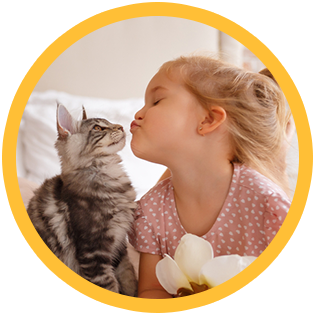

If you have kids, then you are well aware that they spend more time with the cat than you do. The sight of them playing is breathtaking. It is because children are energetic and want to play most of the time which is precisely what most cats need. They easily make a beautiful friendship.
However, if your kid has an allergy, they are bound to get in trouble. Because the cat virtually covers every inch of the house, your kid will get an allergic reaction from almost anywhere even if the cat is away.

You will solve this problem by getting a hypoallergenic cat. Here are some advantages:
• Minimal chances of an allergic reaction
• Peace of mind for you even when your kid plays with the cat
• Less medical expenses for allergy medications and medical visits
• Freedom for both your kid and your pet around the house
• The cat receives adequate attention because kids are great with cats
The bottom line is that getting a hypoallergenic cat will go a long way in keeping you and your family happy. It will allow you to live the normal life with no fears for your precious kids.
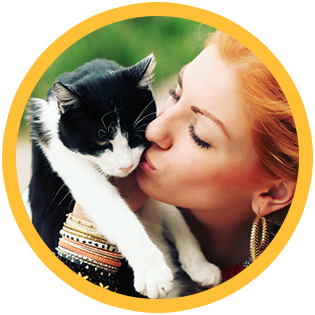
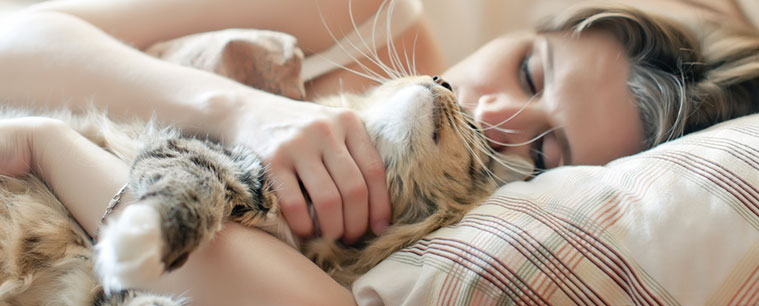
With the above basics, you now know what precisely hypoallergenic cats mean. Its now time to put into perspective the breeds that you can go for in case you have a cat allergy. As mentioned earlier, there are 13 breeds proven to be genuinely hypoallergenic. Here are the breeds and an
in-depth discussion about each.
The first in this list is the Balinese breed. These cats produce less Fel d 1 protein and therefore are less likely to cause an allergic reaction. The production of less allergenic proteins makes them a popular choice among people with cat allergies
Besides being less allergenic, it has great looks too. Its coat is fuller than most cats, and its full plume tail adds to its beauty. Among long coated cats, its minimal shedding makes it stand out. Their vivid blue eyes make them such a beauty to behold. Coupled with their long lifespan of 18-22years, it is one of the best options.
About their personality, these cats are highly energetic and intelligent. They love interacting with humans, and their good humor and nature make them excellent companions. One of the outstanding qualities is their ability to sense your mood and keep close to you or even comfort you when you are sad. They also get along well with kids and are easy to maintain.
Most people find it hard to believe that a Siberian cat is hypoallergenic because of its beautiful long coat. On the contrary, it is one of the safest cats to own for allergy sufferers. It produces less Fel d 1 just like the Balinese and therefore less likely to cause an allergic reaction .
It has an impressive appearance with the long and dense coat that is beautiful. Its undercoat is tight and thick and you won’t be worried about your pet feeling cold. You can make your pick from a variety of colors of this breed.
In addition to the great qualities, its personality is likeable. The cat is highly affectionate and intelligent. You will fall in love with it once its comfortable and its playful nature is revealed.
Less shedding of hair by the Siamese cat qualifies it as a hypoallergenic breed. Some people argue that with its standard Fel d 1 protein levels, it may still be risky for allergic people. However, immunologists and veterinarians agree that by its less shedding, it is less likely to provoke pet allergies.
The Siamese has an outstanding appearance with its strikingly large ears, a fine coat and beautiful baby blue eyes. Its coat can be chocolate, blue or iliac point in color. The extremities are relatively darker that is the tail, feet, face and ears as compared to the pale body color.
It is most suitable for those who like spending a lot of time with their pets as it is heavily reliant on human companionships. It is highly social and outgoing.
These cats have a fine coat and do shed very little. They will therefore not leave the allergens all over your house as the other cats do. As explained earlier, hair carries the Fel d 1 proteins from the cat's saliva and other allergens from the skin and shedding less means less exposure.
Being a Siamese hybrid, it is highly similar in appearance to the Siamese although it does have many more varieties in colors and patterns. There are over 300 colors and patterns which include pure white, ebony and many others. Its eyes are almond-shaped.
When you get one of this cats, you need to be ready to give it all the love because it always needs to be the center of attention. Ignoring it makes it extremely sensitive. In return, your love for it will be repaid with a friendship that runs deep.
With only the bottom undercoat unlike most cats that have three layers of fur, the Cornish Rex has a lot less hair and sheds a lot less. You are less likely to get an allergic reaction when you have this cat in your home than with most other cats.
Its soft wavy hair that comes in a variety of colors makes it a great looking cat. The body size is between small to medium with large ears and long legs. In maintenance, weekly or biweekly bathing will do the magic.
The Cornish Rex is not only affectionate but also highly active. In its perspective, life is always fun. You will easily bond with it and as long as you are giving it adequate attention, you will enjoy the thrill of owning a great pet.
Just like the Cornish Rex, this breed possesses only the soft down-hair. However, it does have way less hair than the Cornish Rex. That allows it to shed very little and thus less likely to cause an allergic reaction in people with cat allergies.
The cat has alien/pixie-ish large eyes that make it unique and eye-catching. Its ears are equally large. Its coat is in breathtaking silky curves and rippling waves. There are a variety of colors.
An equally appealing personality is definitive of this breed. It is naturally outgoing and a true companion pet that you may find yourself getting fond of very quickly. Due to its thin coat, its need for warmth may get it snuggling under the cover with you at night or finding warmth on your lap.
A Bengal cat has a short pelt-like coat which sheds way less hair than the average cat coat. Although it produces normal levels of Fel d 1 proteins and other allergens, exposure to these allergens is minimized by the less shedding of its hair.
Its one of those cats with amazing looks. These looks are courtesy of its glittering trait that makes its coat look like it has been dusted with gold or pearl. The coat is lush, dense and soft and together with round, wide eyes with mascara (dark markings around them), this cat is gorgeous.
An affectionate personality makes it easy to tame. Although not a lap cat, it will enjoy your company and that of your kids. Its energetic nature allows it to stay playful almost all the time.
Another great choice is the Burmese cat which is midway between a Domestic Shorthair and a Siamese. It has a fine coat with short hairs that allow it to shed a lot less. You guessed right, less shedding equals less likelihood of causing an allergic reaction.
The appearance differs between the two different types. The European Burmese has longer narrower muzzles and its nose break is less pronounced while the Contemporary Burmese has shorter broader muzzles and a nose break that is more pronounced. They both look great.
Wherever you live, this energetic and playful cat will adapt and be comfortable enough to give you an excellent company. Its emotional attachment to you and curiosity will make a long lasting impression in your life.
The other breed from the Oriental lines besides Balinese and Oriental Shorthair is the Javanese cat. It has a single medium to long coat that does not mat. The cat has no undercoat and hence less fur and less shedding. You, therefore, are exposed to fewer allergens with this cat than most of the other average cats.
It has a beautiful appearance with its variety of colors like red, torti, cream or seal and a muscular body. Although it may look fragile, it is capable of breathtaking acrobatic feats. The vivid blue eyes and its medium to long hair with soft lines make it stand out.
Among all the cats, it is known for its excellent communication skills. It will quickly grow into an irreplaceable member of your family and its high intelligence will make you glad you chose it.
Like the Siberian and the Balinese, the Russian Blue produces less Fel d 1 protein which is the allergen responsible for most cat allergies. This quality makes it one of the best hypoallergenic cats available today.
Its long, slender, elegant body that is muscular and covered with a double coat makes it an eye-catching cat. Its coat that is bright blue with guard hairs tipped in silver does shimmer with reflective light. The eyes that are yellow while it’s a kitten change in color as it grows to bright, vivid green.
The cat is one of the few pets you can leave home alone and not worry about anything. It easily amuses itself. It is also very playful. You can easily train it and it will provide great company for your family.
The Ocicat is a wild looking cat that owes its hypoallergenic properties to its short hair. It is distantly related to the Siamese Cat. The cat sheds very little hair and thus reduces exposure to allergens that are transferred by hairs to humans. People with cat allergies can therefore comfortably keep this cat in their home.
Its spotted wild looking body gives it an impressive appearance. This breed is easily distinguishable from other cats due to its leopard-like spots. There are several distinct colors that you can choose from when you opt for this cat.
Ocicat Cats are some of the smartest cats. They easily get along with people because of their sociable nature. They will also get along with your other pets.
With many features similar to the Siamese, the Colorpoint Shorthair Cat was bred from the Siamese, the Abyssinians and the red tabby American Shorthair cats. The outcome was a cat with an impressive twenty different color points and hypoallergenic as well. Their short hair sheds less than the average cat and therefore less allergenic.
Besides the different color points, this cat has stunning blue eyes. Its stunning medium sized body adds to its attractiveness.
Most owners attest to their non-stop chatter. They are highly vocal and can communicate easily which makes them some of the most talkative cats. A blend of intelligence and playfulness makes them great to have around.
The final breed in this list is the unique Sphynx Cat. It is often called the hairless cat because most of the cats of this breed appear to be hairless although they are actually covered with a fine gossamer down that is barely felt. They, therefore, shed almost nothing and are possibly the least allergenic cats available today.
Its hairless body gives it a unique look. The appearance is a friendly approachable one courtesy of the widely set eyes and their open roundness. Its fine coat gives it a warm suede appearance.
If you go for this cat, you will enjoy its high energy and acrobatic tendencies. With love for attention, they will keep you and your family entertained. They are generally easy to handle.
allergy, you will not only need a cat that is least allergenic but will also need to have several boundaries when it comes to handling your cat.
On the contrary, people with mild cat allergies can do well with even the least hypoallergenic cats. That is the reason why you may find some people praising some breeds for their great hypoallergenic nature while some complain that they still had allergic reactions.
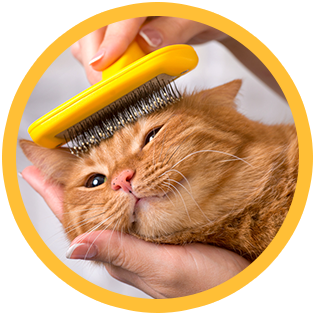
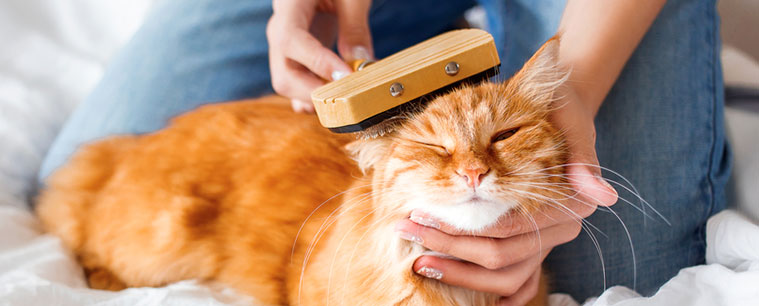
The above 13 breeds of cats have been proven to be hypoallergenic. You can safely do keep them in your home and have your kids enjoy their company even if they have cat allergies. Here are a couple to tips to help you enjoy to keep the hypoallergenic cat.
Shedding of hair leaves some hairs dropping to the floor or other surfaces while some are left on the cat as loose hair. When handling your cat, exposure to the loose hair may result in an allergic reaction. It is therefore advisable to regularly brush your cat to remove the loose hairs to prevent the risk. Maintenance is critical when it comes to those cats which produce normal levels of Fel d 1 with the only hypoallergenic mechanism being short hair. Brushing once weekly or bi-weekly is good enough.
Scientific studies have revealed that for unneutered cats, the females are less allergenic as compared to the males. You may, therefore, need to opt for the female cat even though both are hypoallergenic. The males are not only slightly more allergenic but also are harder to handle which may be a prerequisite if you need to control their behaviour.
Before you decide to take a hypoallergenic cat with you to your home, it is good to spend some time with the cat and see if you react. The levels of cat allergy vary from one person to another and therefore testing to see if the low allergy levels in your potential cat are safe enough for you is critical. You don’t want to fall for the great marketing by breeders and end up with an adverse allergic reaction once you get home. Some allergic reactions develop immediately within minutes while others take hours and therefore it is good to give yourself time after initial exposure to see how you react. If it doesn’t cause any problems, then you can take your pet home with you.
It is not just a cat allergy that may be provoked by a cat. Exposure to cats for some people may worsen existing allergic diseases like asthma. It is therefore essential to establish whether anyone in your home has any allergic disease and monitor their reaction to the cat in the first couple of days. Any form of worsening of the condition needs immediate medical advice.
A common mistake seen among many people suffering from allergies is settling for any cat that is marketed as hypoallergenic. You may need to do your research to establish whether the breed is among the genuinely hypoallergenic cats. The above list of 13 breeds is a great place to start. Always insist on the scientific evidence behind the claims. You also need to watch out for breeders who may sell some cats under the false pretence of being purebreds. Always go for trustworthy breeders for the proven breeds.
For those who are severely allergic, controlling the movement of your cat within your home can help reduce chances of allergic reactions happening. For instance, never let the cat into your bedroom because they may leave allergens on your bed that will cause you trouble when you sleep.
Training your cat well comes in handy at this point when you have to control its movement. Make sure it knows its boundaries and you will safely enjoy keeping it.
In the cases where you have a breed that does not do well with being left alone, get two of them so that they can keep each other company. It is especially important if you lead a busy life and have gotten yourself cats that love attention and get mischevious when left alone. Getting it a companion will enable you to concentrate on what matters and organize the time you will spend with them. They will be healthier and happier together.
As mentioned earlier, the allergens are in the saliva, on the skin and in the urine of the cat. The litter box will, therefore, contain high levels of the allergen. If you have a cat allergy, it will be essential to get someone else to clean it for you. In case you have to do it yourself, you will need to wear adequate protective clothing that prevents exposure.
If you are not sure about your cat allergy, see a doctor and get blood tests. You can also be able to establish the level of severity. People with severe allergies are sensitive to even the smallest degree of allergens. If you have a severe cat allergy, you will not only need a cat that is least allergenic but will also need to have several boundaries when it comes to handling your cat.
On the contrary, people with mild cat allergies can do well with even the least hypoallergenic cats. That is the reason why you may find some people praising some breeds for their great hypoallergenic nature while some complain that they still had allergic reactions.
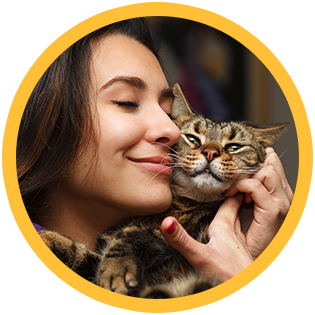
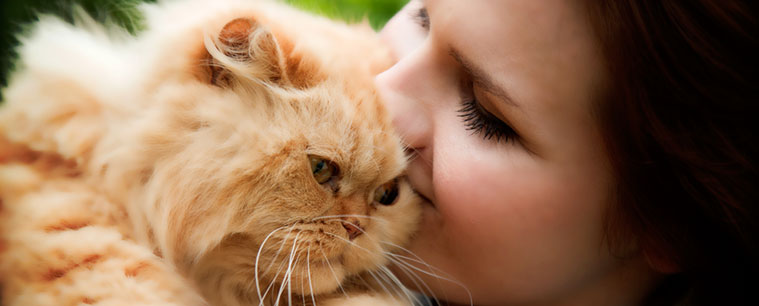
Cats are intelligent pets that will connect with you to a level that no other pet can. However, having a cat allergy may prevent you from enjoying the company of a lovely cat. Luckily, hypoallergenic cats allow even those with cat allergies to have cats in their homes. These cats include Balinese, Siberian, Siamese, Oriental Shorthair, Cornish Rex, Devon Rex, Bengal, Burmese, Javanese, Russian Blue, Ocicat, Colorpoint Shorthair and Sphynx. All the best as you get a hypoallergenic cat to spice up your life.
Sharing is Caring
"The 10 foundations of a fulfilling relationship with her cat"

© My Awesome Cat